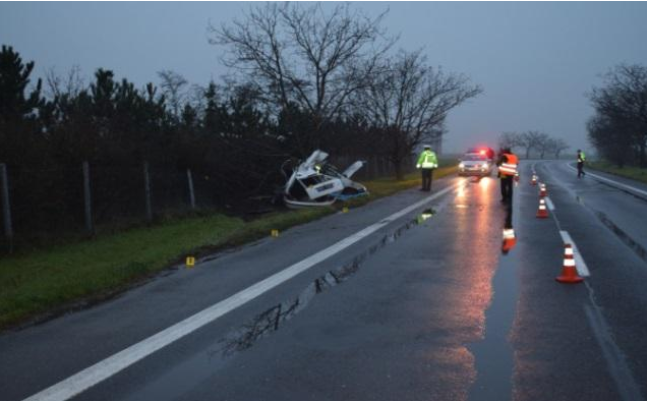Summer has said “no” to the sunny and warm day, giving the relay to the next season. In autumn, lower temperatures are often associated with ground frost, fog, and reduced visibility.
All road users must be prepared for difficult road conditions by more frequent fogs, rain and, as a result, on wet or icy roads. It is better to be prepared than surprised, so the police are bringing ‘ten’ useful tips that will help to drive safely and reach a happy destination.
1. The most common mistakes of pedestrians – sudden entry into the road from the sidewalk without looking around, poor estimation of the distance and speed of the vehicle, crossing off the passage (often even cross four lanes), underestimating reflective tapes on clothing.
The right response – to anticipate, to cross the road at designated locations, to avoid risky sections, not to climb over railings, not to risk. The obligation of pedestrians walking on the side of the road or on the edge of the road to wear reflective elements or wearing reflective safety clothing not only outside the village but also in the village in low visibility.
2. Police Recommendation – Use reflective elements on the side of the body that faces the road (not the shoulder). Reflective items should be placed best close to the knees and at waist level, on the shoulders, cyclists also on helmets and bicycles. Reflective stickers stick to shoe soles, bikes, skates, helmets, scooters, school bags, crutches or strollers. Children’s clothing, school bags, and accessories equipped with reflective and fluorescent safety features.
3. The most frequent mistakes of cyclists – without lights, without reflective elements, cycling outside the village without a helmet (under 15 years also in the village), on the wrong side of the road and driving in groups side by side and driving under the influence of alcohol.
The right response – to keep track of what is happening around you and always make sure of safe passage, to give you a visible and timely signal of your hands-on changing direction, use of helmets and protectors, reflective elements.
4. Police recommendation – if parents take a child on a bicycle trip, the child must always be in front of them to be able to influence their driving by giving them a warning. Care must be taken to ensure that his health is adequately protected – by a helmet, limbs, reflective elements on clothing. In case of bad weather (iceberg, snow) use other means of transport.
5. Aquaplaning – there is more water between the tire and the road than the tread can handle, the car “floats” and becomes unmanageable.
Correct response – leg out of gas, depress the clutch. Align the steering wheel until the tire touches the road. Hold the steering wheel with both hands and do not risk overtaking.
6. Fog – difficult driving conditions with reduced visibility, wet road.
Correct response – reduce speed, increase the distance between vehicles. Switch on the fog lights, while driving in the columns, the first and the last in the row are sufficient to avoid blinds of other drivers.
7. Beast – risk especially at night and in the morning, unexpectedly and unpredictably.
The right response – avoid the obstacle at high speed. The consequences of skidding may be greater than the collision itself, especially when driving on a motorway.
8. Agricultural machinery – dirty road from mud and leaves, increased risk of skidding.
The right response – anticipate, reduce speed, pay particular attention to preventing heavy machinery.
9. Fruit pickers – trees on the roads attract “pickers”, comfortable bikes on the road, bikes, running children and adults in dark clothes.
The correct reaction of drivers – increase caution, monitor the situation, reduce speed.
The correct reaction of pantographs – reflective vests, belts, caps, whatever makes them visible to the driver and ensures that their “vehicles” do not endanger others.
10. Police recommendation – in difficult weather conditions to predict in particular, adjust speed to weather and your abilities, monitor the situation especially around stops, schools and shopping centers, where the movement of pedestrians and cyclists is increased. Give them a preference where they have it.
